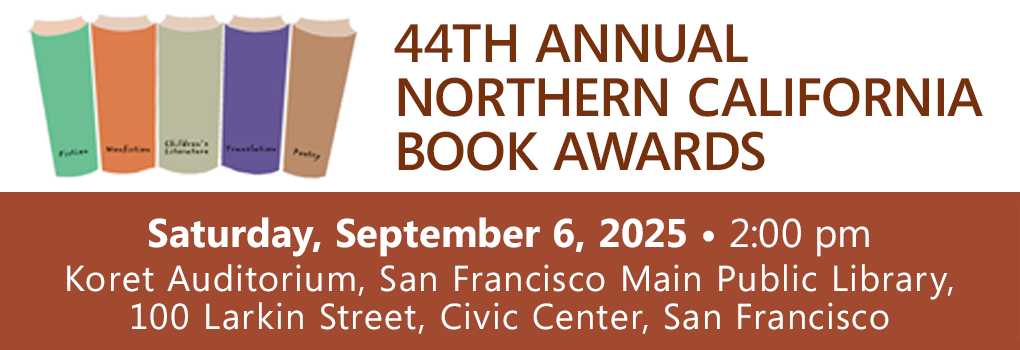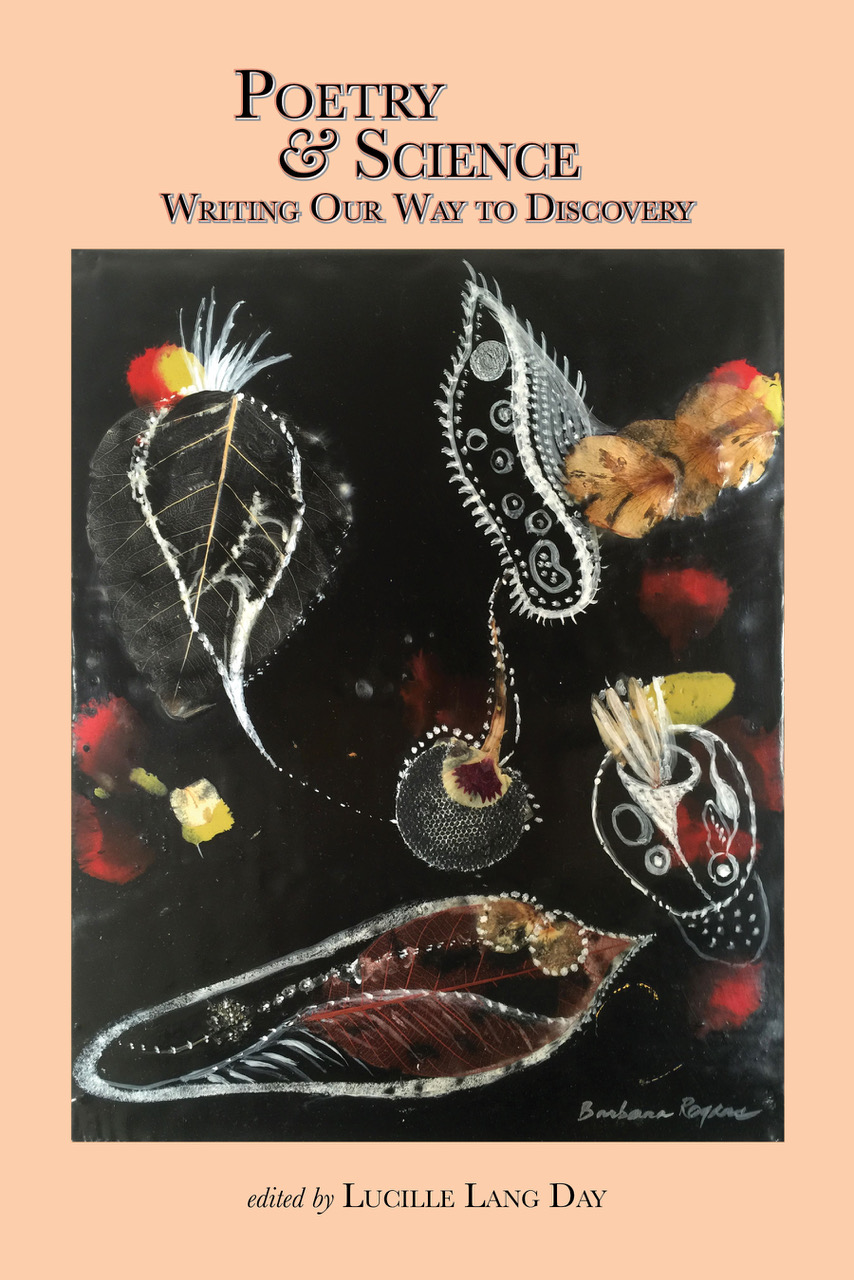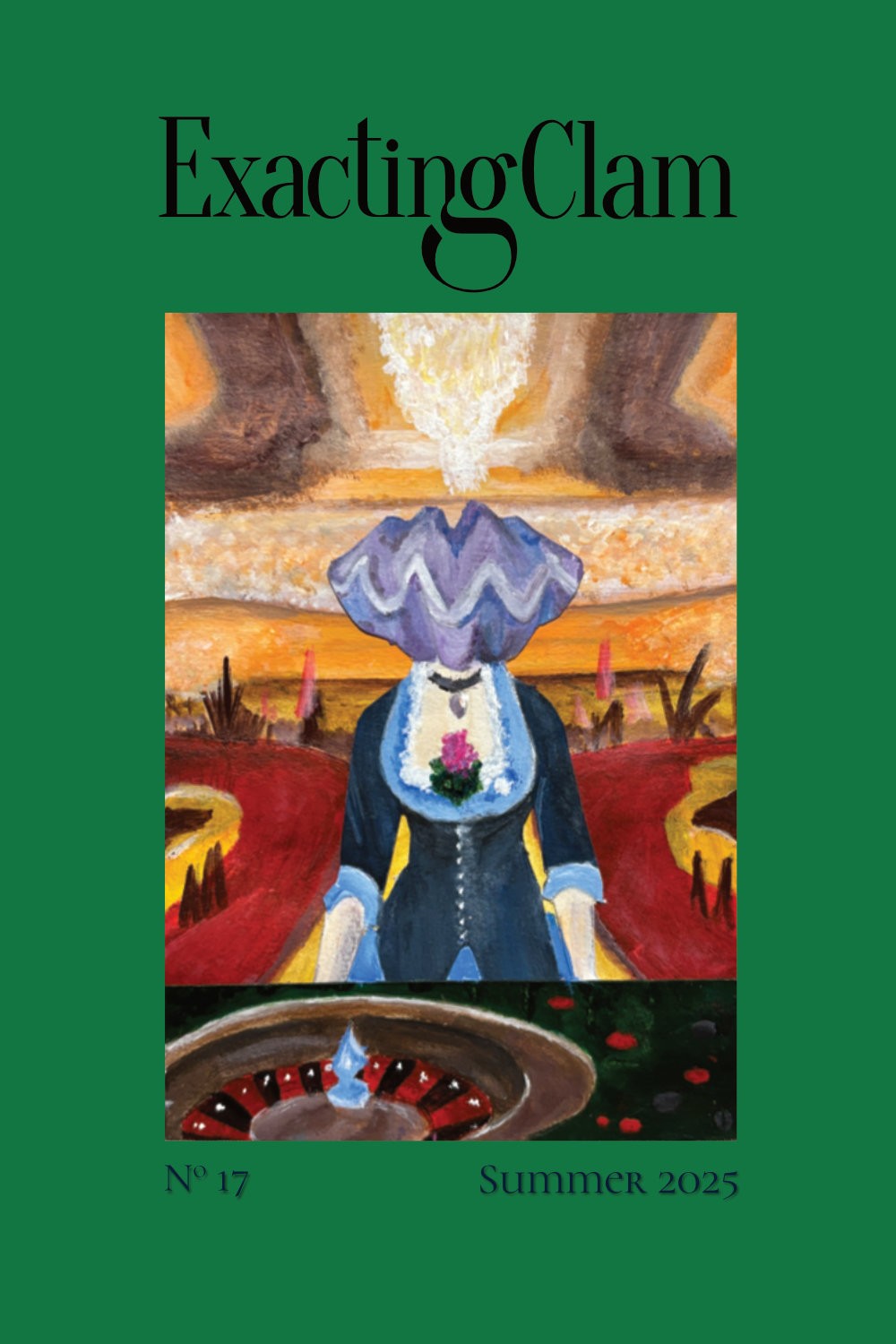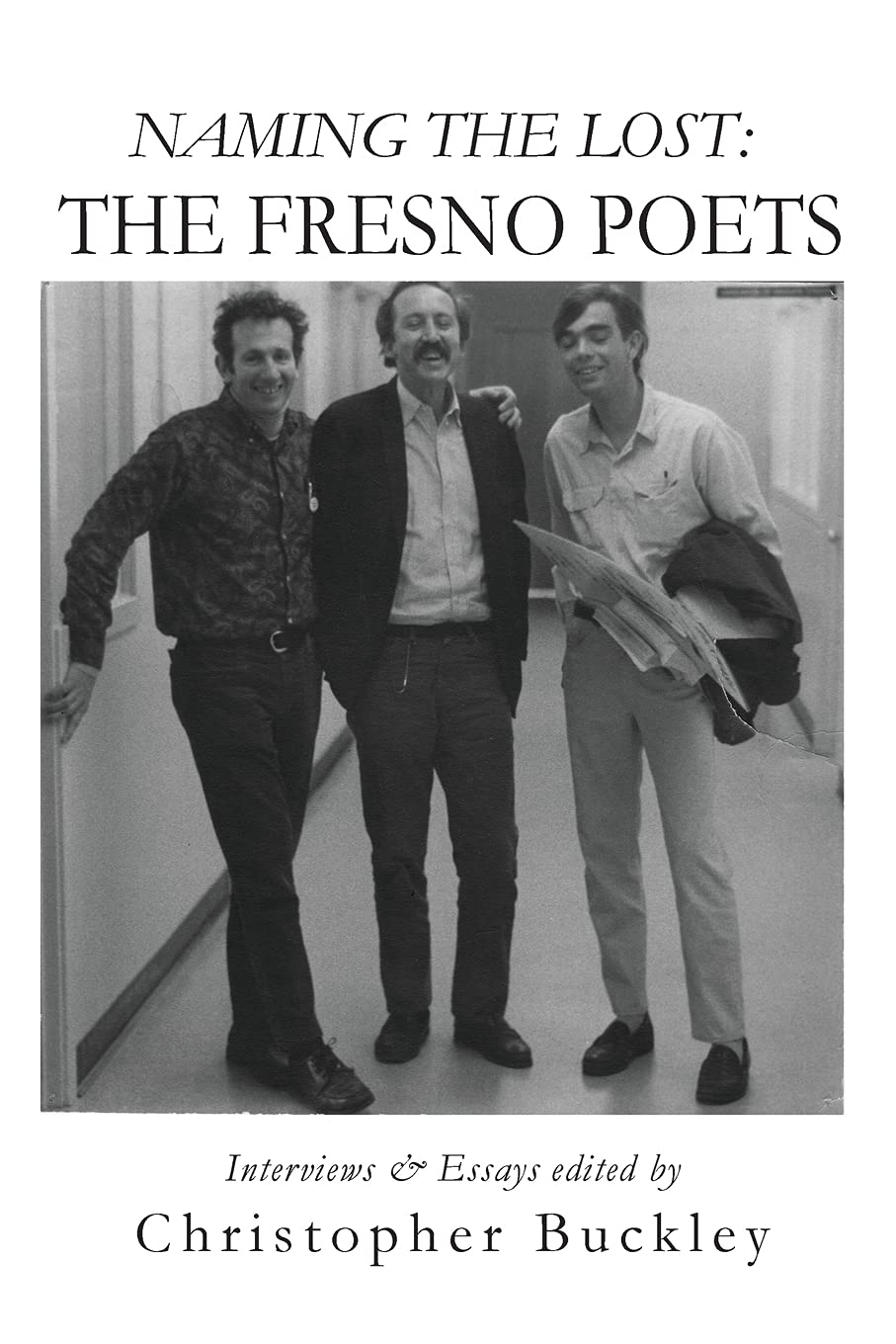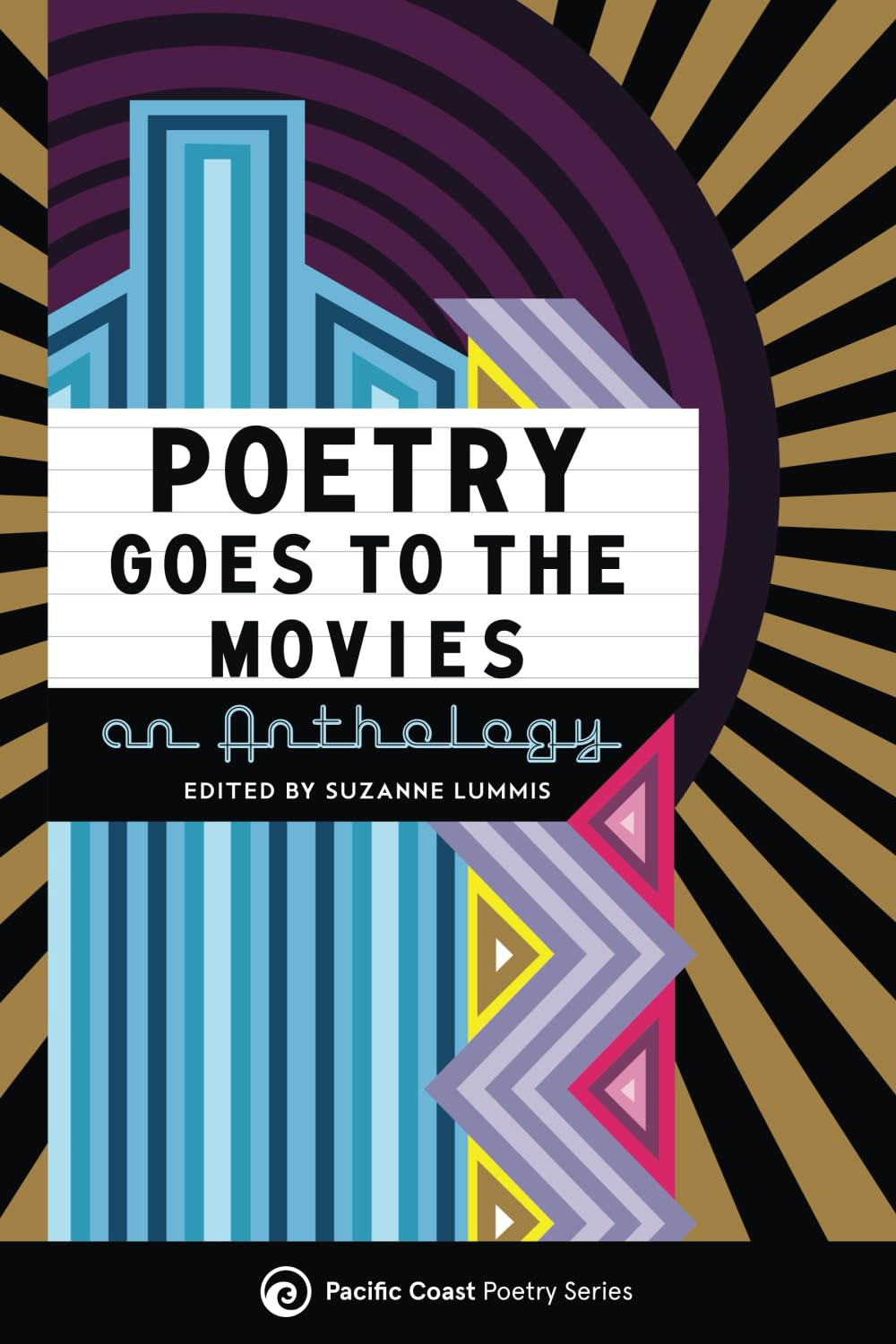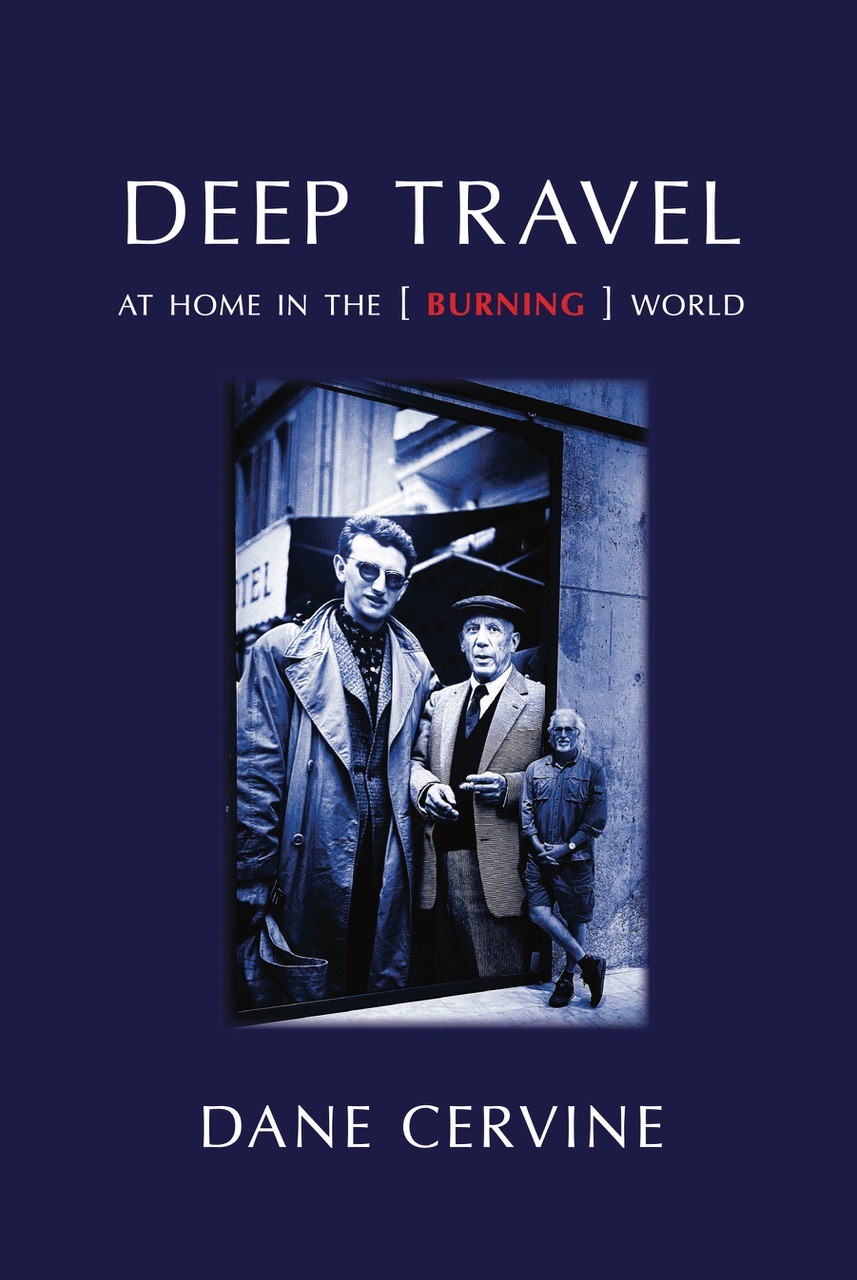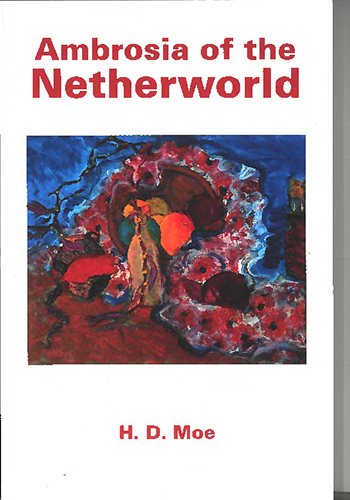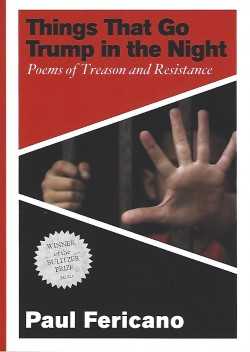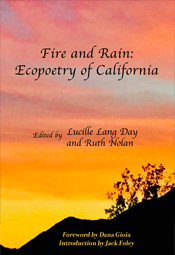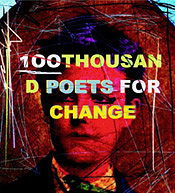
Old Italian Living: On Ferlinghetti
by Jack Foley
A Coney Island of the Mind: 50th Anniversary Edition, poems by Lawrence Ferlinghetti, New Directions, New York, 2008, 96 pages, $23.95 cloth, includes a newly recorded CD of the author reading his work.
I am signaling you through the flames.
The North Pole is not where it used to be.
—Lawrence Ferlinghetti, Poetry as Insurgent Art
In Kerouac's Big Sur he is "sweet old Monsanto," "Monsanto with his husky shoulders,"
big blue eyes, twinkling rosy skin, that perpetual smile of his that earned him the name Smiler in college and a smile you often wondered "Is it real?" until you realized if Monsanto should ever stop using that smile how could the world go on anyway—
Some history, in brief:
In December, 1950, Lawrence Ferling, hearing good reports of the city, moved from Paris to San Francisco. Earlier that year, Senator Joseph McCarthy had announced that he possessed the names of "205 Communists working and shaping the policy of the State Department," and the term "McCarthyism" had been coined by Washington Post cartoonist Herbert Block ("Herblock"). The Korean War had begun five months before Ferling arrived on the West Coast. In 1953, five of his translations of poems by the French poet Jacques Prévert were published in the radical North Beach magazine City Lights, edited by Peter D. Martin, son of Italian anarchist Carlo Tresca and nephew of U.S. Communist Party leader Elizabeth Gurley Flynn. Martin was convinced that paperback books were the coming thing, and in June of that year he and Ferling, each investing $500, opened "City Lights Pocket Book Shop," America's first paperback-only bookstore. (In July, 1953, a cease-fire will be reached in Korea.) In The Beat Generation in San Francisco: A Literary Tour, Bill Morgan tells us, "Kenneth Rexroth predicted, 'There's no way they could ever make a success of that bookstore. Lawrence could stand at the door and hand out paperbacks as fast as he could and he still wouldn't make it.'"
In 1954, "Lawrence Ferling" changed his name to "Lawrence Ferlinghetti," [editor's note: it was his father's original name] and it was as Lawrence Ferlinghetti that, in 1955, he published his first book, Pictures of the Gone World. The publisher was his own City Lights Press. Ferlinghetti sensed that paperback would be a good medium for poetry, and his book is the first in the series of City Lights' "Pocket Poets." The second book will be Kenneth Rexroth's Thirty Spanish Poems of Love and Exile. HOWL and Other Poems will be number 4.
In 1955—the year when "Howl" was read at the Six Gallery—Peter Martin moved back to New York to open still another bookstore, and Lawrence Ferlinghetti became the sole proprietor of City Lights Books. On May 21, 1957, he was arrested for selling HOWL and Other Poems—which he had published—and the sensational "Howl" trial began. It has never been determined who alerted the police to HOWL's presence in the store: was it someone hostile to the poem—a "square"—or was it someone sympathetic to the poem trying to get it a little publicity? Black Mountain College had closed in 1956, and its students were frequently migrating to San Francisco. Allen Ginsberg had departed for Tangier in 1956, but young Beats were invading North Beach and, as Michael Rumaker writes in Robert Duncan in San Francisco, "a dope scene is blooming. The Place [a tiny hole in the wall on Grant Avenue founded by Black Mountain students Leo Krikorian and Knute Stiles] is where the poets and painters hang out and Jack Spicer directs Blabbermouth nights…Meanwhile the police are stepping up their hassling of hippies on upper Grant Avenue and arresting gays on Polk Street."
In October 1957, Judge Clayton Horn declared "Howl" "not obscene"; Ginsberg's poem was vindicated, and City Lights Press was famous. It was also in 1957 that the "San Francisco Scene" issue of The Evergreen Review appeared. The issue opens with Kenneth Rexroth's "San Francisco Letter," which declares,
There has been so much publicity recently about the San Francisco Renaissance and the New Generation of Revolt and Our Underground Literature and Cultural Disaffiliation that I for one am getting a little sick of writing about it, and the writers who are the objects of all the uproar run the serious danger of falling over, "dizzy with success," in the immortal words of Comrade Koba. Certainly there is nothing underground about it anymore…It is easy to understand why all this has centered in San Francisco. It is a long way from Astor Place or Kenyon College. It is one of the easiest cities in the world to live in. It is the easiest in America.
In 1958, Ferlinghetti's A Coney Island of the Mind appeared from New Directions and became not only that press's first best-seller but one of the most popular poetry books ever published in the United States. Lawrence Ferlinghetti was—and has remained—famous. To mangle a remark made by John D'Emilio in another context, Ferlinghetti's bookstore, City Lights, and his home town, San Francisco, became for poets what the Vatican and Rome were for Catholics. By 1958, George Sterling's "cool, grey city of love" had become a city of active poetry and poets—poets frequently prone to what William Everson called "the exacerbations of explosive temperaments." Novels like Jack Kerouac's On the Road (1957), The Dharma Bums (1958) and Big Sur (1962) continued the advertisement of San Francisco as Poetry City. Today—long after most of the participants in that "Renaissance" are dead—literary tourists continue to make a beeline for 261 Columbus Avenue, where City Lights Books (like a shrine) is located, and the city's newspapers regularly run articles which declare hopefully that "the Beat goes on."
In 2008, with much fanfare and a CD, A Coney Island of the Mind appeared again from New Directions in a special fiftieth-anniversary edition. The new edition sports blurbs from the late poet Robert Creeley and Amiri Baraka as well as from filmmaker Francis Ford Coppola, orchestra conductor Michael Tilson Thomas, and singer Tom Waits ("I got it signed when I was a teenager"). Though the cover is different, the poems still look exactly the same as they did fifty years ago—a relic of San Francisco's glory days.
Are the poems nothing but a blast from the past? Do they still seem as fresh as they did fifty years ago? None of Ferlinghetti's subsequent books has sold like A Coney Island of the Mind. What is the source of that book's astonishing appeal? Ferlinghetti himself remarks that poets often complain about his work's clarity: "It isn't opaque enough, it's too easy to understand."
*
The poems in A Coney Island of the Mind are presented in three sections: "A Coney Island of the Mind," "Oral Messages" ("seven poems…conceived specifically for jazz accompaniment"), and "Poems from Pictures of the Gone World." Here are some passages from the first and third sections. Almost any reader of poetry will find many of them familiar:
Away above a harborful
of caulkless houses
among the charley noble chimneypots
of a rooftop rigged with clotheslines
a woman pastes up sails
upon the wind
hanging out her morning sheets
with wooden pins
O lovely mammal
her nearly naked teats
throw taut shadows
when she stretches up
to hang at last the last of her
so white washed sins
but it is wetly amorous
and winds itself about her
clinging to her skin
(from "Away above a harborful...")
*
Yes the world is the best place of all
for a lot of such things as
making the fun scene
and making the love scene
and making the sad scene
and singing low songs and having inspirations
and walking around
looking at everything
and smelling flowers
and goosing statues
and even thinking
and kissing people and
making babies and wearing pants
and waving hats and
dancing
and going swimming in rivers
on picnics
in the middle of the summer
and just generally
'living it up'
Yes
but then right in the middle of it
comes the smiling
mortician
(from "The world is a beautiful place")
*
Reading Yeats I do not think
of Arcady
and of its woods which Yeats thought dead
I think instead
of all the gone faces
getting off at midtown places
with their hats and their jobs
and of that lost book I had
with its blue cover and its white inside
where a pencilhand had written
HORSEMAN, PASS BY!
(from "Reading Yeats I do not think...")
*
But we have our own more recent [madmen]
who also fatally assumed
that some direct connection
does exist between
language and reality
word and world
which is a laugh
if you ask me
I too have drunk and seen
the spider
(from "sweet and various the woodlark...")
*
And everybody after that
is always making models
of this Tree
with Him hung up
and always crooning His name
and calling Him to come down
and sit in
on their combo
as if he is the king cat
who's got to blow
or they can't quite make it
Only he don't come down
from His Tree
Him just hang there
on His tree
looking real Petered out
and real cool
and also
according to a roundup
of late world news
from the usual unreliable sources
real dead
(from "Sometime during eternity")
These passages are masterful, and we should remember that Ferlinghetti was not a very young man when he wrote them. (He was born in 1919. In 1955 he was thirty-six; in 1958 he was thirty-nine.) The poems in these early books were created by someone who had thought very carefully about his art; they embody a complex of forces which, in their tensions, very nearly burst apart. A famous poem from A Coney Island of the Mind, "Constantly risking absurdity…," pictures the poet as an acrobat balancing himself on the "high wire" of his "rime." It is an extraordinarily apt image for what is happening.
Unlike Ezra Pound (and as Ferlinghetti himself points out), Lawrence Ferlinghetti is never "difficult"—despite the fact that, visually, his poems look like the kind of thing one finds in Pound. This is one of the reasons why poets might call him "too clear": he sets up expectations of Pound but produces a poem which, unlike Pound's, isn't "obscure." For a young person, of course, this is a great advantage. Here is a Pound—a Modernist, an avant-garde writer, a bringer of the new—whom you can understand. Moreover, unlike much of Pound, which depends on powerful disjunctions, these poems are unabashedly narrative, seem cohesive, even erotic. They tell little stories, make "pictures": "O lovely mammal / her nearly naked teats / throw taut shadows." (Such lines are of course indebted to Pound's "Imagist" procedures.) In later editions Ferlinghetti changed the word "teats" to the word "breasts."
Like Mallarmé, whose "Un coup de dés" the poems resemble a little, Ferlinghetti is extremely careful about line endings and shape on the page. This poet is a painter as well as a poet and, in part, he is treating the page as a canvas (Mallarmé's term is "toile," which means both "sail" and "canvas")—he is putting phrases on it as a painter might apply bits of paint. But unlike Williams or Creeley, whose line endings often challenge our ability to understand the poem at all, Ferlinghetti never challenges us too much. Line endings are important, but you don't have to know that to read the poem. You can treat it as a piece of prose, and while you won't fully understand the poem by doing that, you won't totally lose contact with it either, as you might with a Creeley or Williams poem. (Part of the point of "Un coup de dés" is that it is totally impossible to treat it as prose!) Ferlinghetti keeps the reader's mind carefully and gently in motion as we move from phrase to phrase, at times word to word. There are surprises everywhere, unexpected phrases or words suddenly appearing, but the surprises are never extremely unexpected, extremely sudden.
There are undoubtedly people who read these poems as nothing but a string of banalities. Such people (among them were Ferlinghetti's early critics) miss the brilliant placement of a word like "mortician" in "The World Is A Beautiful Place." The word, certainly a surprise after "smiling," forces everything into a new perspective. Or what about the phrase "I too have drunk and seen"? Seen what? Hallucinations?—which is what one is likely to "see" after "drinking." The answer (if it is an answer) is "the spider." What does "the spider" have to do with the ostensible subject of the lines—the relationship between "language and reality / word and world," which the poem calls "a laugh"? Answers to these questions can be found or at any rate speculated upon—"I have drunk, and seen the spider" is a line from The Winter's Tale—but the specific action of the poem is not to answer questions but to cause us to consider possibilities.
In his novel, Love in the Days of Rage, Ferlinghetti has a character speak about the nature of "thought":
"All ideologies idiotic, no? Thinking itself idiotic! We start thinking and get ideas and divide everything up into ideas, and the ideas become ideologies, and then the tribes go to war over their ideas, these ideologies which are nothing more than obsessions, obsessions of the tribe!"...
"So what then?" Lemos burst forth again, his eyes still on the far road. "So what then, if thought itself is the destroyer—if thought itself divide us up into hate groups and set us killing each other, over and over, century after century—only we're better at it now than ever before—ten thousand wars in five thousand years! And then—where exactly—exactly where—where is what they call 'love' in all this?" He turned to her as if she should have the answer. "Is this so-called 'love' too just another thought, just another product of thinking—that demon thinking which causes all the trouble in the first place?"
These poems never arrive at "thinking" in the sense Ferlinghetti uses it here, though they bring us to the brink. They balance the mind at a point at which it is active and open and never quite certain of anything ("Reading Yeats I do not think"). Even an extremely resonant phrase like "real dead" is qualified by the previous line's admission that such "news" depends upon "the usual unreliable sources." Ironic, funny, distanced, the poems are never an emotional outpouring—never a "howl." They move us to a point just shy of "ideology," finding ways of evading "thinking" even while they encourage it.
In addition, despite their literary qualities—and the poems seem to grow more literary as Ferlinghetti's career moves forward—they always maintain a connection to ordinary American speech. ("Sometime During Eternity" moves towards hipster speech, particularly the speech of the arch hipster, Lord Buckley.) The speech-like character of the poems is another reassurance that they are not going to be too esoteric; though they are rarely very colloquial, they are colloquial enough to suggest an attractive informality. Ferlinghetti told me that his early work was a pure imitation of T. S. Eliot: "Everything I wrote sounded just like him." These poems are perhaps a response to that awareness. Though Ferlinghetti carefully distances himself from Allen Ginsberg's "first thought, best thought" esthetic, a certain speech-like spontaneity is an important aspect of these carefully controlled, artful, by no means entirely "spontaneous" poems. They exist as a field of tensions, a little "world" which is both held together and continually tending to fly apart:
Constantly risking absurdity
and death
whenever he performs
above the heads
of his audience
the poet like an acrobat
climbs on rime
to a high wire of his own making
(from "Constantly risking absurdity…")
I suggested Pound as an antecedent to such poetry, but so is E. E. Cummings, particularly E. E. Cummings in his less 'experimental', speech-based modes—the Buffalo Bill poem, for instance. Another source is the French poet, Jacques Prévert, whom Ferlinghetti translated:
Je suis comme je suis
Je suis faite comme ça
Quand j'ai envie de rire
Oui je ris aux éclats
J'aime celui qui m'aime
Est-ce ma faute à moi
Si ce n'est pas le même
Que j'aime chaque fois
("Je Suis Comme Je Suis")
I am as I am
I'm made that way
When I feel like laughing
I burst right out
I love the one who loves me
Is it my fault especially
If it's not the same one
I love each time
("I Am As I Am," Ferlinghetti's translation)
Prévert's celebrated rhyming ("Rappelle-toi Barbara / Il pleuvait sans cesse sur Brest ce jour-là") is difficult to reproduce in English—in his introduction to the translations Ferlinghetti remarks ruefully that "we tend to forget that English is not a Romance language"—but there is a hint of it in the quiet rhyming of "sins" and "skin" in "Away above a harborful..." or of "pants" and "dancing" in "The world is a beautiful place" or of "dead" / "instead" and "faces" / "places" in "Reading Yeats" or of "climbs" and "rime" in "Constantly Risking Absurdity...." Prévert's centered verse form is reproduced in Ferlinghetti's "Dove sta amore," and the title of the famous "Tentative Description of a Dinner to Promote the Impeachment of President Eisenhower" partially translates Prévert's "Tentative De Description D'Un Dîner De Têtes A Paris-France." Like Ferlinghetti himself, like T. S. Eliot—like many Americans—these poems contain elements from both the Old World and the New World, though their Modernist insistence on immediacy ("her nearly naked teats / throw taut shadows / when she stretches up") tends to place a particular emphasis on the New.
Equally important to the effect of these poems is the fact that many of them deal with death, whether in the form of the "smiling mortician" or of the Jesus who is "real dead" or of "the woods which Yeats thought dead." (Some of the most energizing words of "Reading Yeats I Do Not Think..." are: "dead," "gone," "lost," and "PASS BY!" And the white "sails"—sheets—the woman is hanging on the line in "Away above…" become by the end of the poem "white shrouds.")
The concept of "death" has different meanings at different periods of our lives. Ferlinghetti's age at the time of writing these poems suggests the possibility that he may have been experiencing what Jungians call the process of "individuation," a process which, writes Jung in his "Commentary on The Secret of the Golden Flower," "has scarcely any meaning before the middle of life (normally between the ages of thirty-five and forty)." This growth process or "dangerous passage" involves a confrontation with the forces of "death"—"for that which is feared also belongs to the wholeness of the self"—as well as the reconciliation of various oppositions, particularly the opposition between the conscious and unconscious minds. As Jung describes it, the process "is not the niggardly European 'either-or,' but a magnificently affirmative 'both-and'":
We are so hemmed in by things which jostle and oppress that we never get a chance, in the midst of all these "given" things, to wonder by whom they are "given." It is from this world of "given" things that the dead man liberates himself....
(Jung, "Commentary On The Tibetan Book of the Dead")
The poems in Ferlinghetti's early books act as little transformation experiences which "liberate" us from the given. As we encounter them phrase by phrase, they continually change our perceptions. "Reading Yeats I do not think" does not mean the same thing as "Reading Yeats I do not think of Arcady," and we have to make an adjustment, a change, when we come upon the new phrase. The change is slight, to be sure, but it is real, and the poems ask us to make such adjustments over and over again. (In "Away Above" the white sheets become white "sails" which become "white-washed sins" which become "white shrouds." The woman too is undergoing metamorphosis: she is an object of sexual interest, a muse, and an artist who "pastes up" her sheets.) This, I think, is the source of Ferlinghetti's deepest appeal to the young. To the young, "death" is not so much the experience of people ceasing to exist as it is the experience of personal change—not death but "death." It is at the "dangerous passage" from childhood and adolescence to adulthood—a kind of death / resurrection—that people come upon books like A Coney Island of the Mind, books which express beautifully that moment of transformation, of desire, loss, loneliness, uncertainty, growth—of passage:
I think instead…
of that lost book I had
with its blue cover and its white inside
where a pencilhand had written
HORSEMAN, PASS BY!
These early works are hardly 'innovative'—as Pound's work certainly was—but they do manage to honor the complexity of the mind while, at the same time, they allow people who do not recognize that complexity to enter the poems. It is an extraordinary accomplishment.
Ferlinghetti turned away from these poems (which he associated with France) to produce something quite different. "I began to write about what I was doing here," he says.
He did not call the new work "poetry"; it was "Oral Messages"—and these poems make up the central section of A Coney Island of the Mind. In a note included in the book, he writes,
These seven poems ["I Am Waiting," "Junkman's Obbligato," "Autobiography," "Dog," "Christ Climbed Down," "The Long Street," "Meet Miss Subways"] were conceived specifically for jazz accompaniment and as such should be considered as spontaneously spoken "oral messages" rather than as poems written for the printed page. As a result of continued experimental reading with jazz, they are still in a state of change.
In a statement recorded on disk he was even more extreme:
The trouble with the printed word is, it is so silent. Let poetry return to its first purpose—the oral message. Let there be a law against writing poetry. It should be spoken, then recorded.
Such assertions arose out of Ferlinghetti's immensely popular sessions at The Cellar, where he read his poetry to the accompaniment of The Cellar Jazz Quintet. (Some of that work was indeed "recorded" and has been reissued on Fantasy's howls, raps & roars CD. It can also be found on the CD included with this book.) The effect on Ferlinghetti's poetry is rather startling:
I am waiting for my case to come up
and I am waiting
for a rebirth of wonder
and I am waiting for someone
to really discover America
and wail
and I am waiting
for the discovery
of a new symbolic western frontier
and I am waiting
for the American Eagle
to really spread its wings
and straighten up and fly right
and I am waiting
for the Age of Anxiety
to drop dead
and I am waiting
for the war to be fought
which will make the world safe
for anarchy
and I am waiting
for the final withering away
of all governments
and I am perpetually awaiting
a rebirth of wonder
I am waiting for the Second Coming
("I Am Waiting")
One can see what has happened by attending to the very first word of the poem: "I." In the 768 lines that make up Pictures of the Gone World the word "I" appears only thirty times. In the opening section of A Coney Island of the Mind the word "I" appears seventeen times in 803 lines. In the poem quoted from above, the word "I" appears seventeen times in the first two stanzas alone—forty-eight lines.
Ferlinghetti's earlier poems are dependent on juxtapositions, often juxtapositions of visual facts, things that can be seen. They are essentially descriptive, and, though they do build up a sense of a perceiving self, a 'person' behind the poems, they do it through indirection, by inference. We assume that the person observing the "lovely mammal" in "Away above a harborful..." is male—in effect, Ferlinghetti himself—and that a detail like "her nearly naked teats" means that he desires the woman he sees. (She is, presumably, Ferlinghetti's then wife, Kirby—the "K" to whom the entire collection is dedicated.) But the poem never tells us that. The first person singular never appears in the poem: strictly speaking, we know nothing at all about the speaker of the poem. In contrast, "I Am Waiting" begins with the first person singular and proceeds to repeat it constantly. (One remembers Olson's "The Kingfishers": the bewildered I of the beginning of the poem simply disappears: there is no I at all in the central section. In the short concluding section, however, the I appears ten times in seventeen lines. Like the I of Ferlinghetti's "I Am Waiting," it is an emphatic I which is telling you exactly "who" "it" is.)
What has happened? Have we moved from something like "Negative Capability" to something like "The Egotistical Sublime," to use Keats' terms? Has Ferlinghetti discovered the 'oral tradition,' the poetry reading? (In his 1975 "Populist Manifesto," parodying "Howl," the poet asserts, "We have seen the best minds of our generation / destroyed by boredom at poetry readings"—poetry readings which proliferated largely as a result of the success of "Howl.") The answer to both questions is, probably, yes: Ferlinghetti has discovered the Egotistical Sublime, the oral tradition, and the poetry reading. But more needs to be said, and though what I am saying here is a simplification, it is sometimes necessary to simplify in order to make a point at all.
Behind the strongly visual tradition of so much Modernist verse—behind, say, Williams' "Red Wheelbarrow" poem—lies the possibility of a fragmented, contradictory, even multiple self. The poet avoids confronting that self by immersing the poem (and the reader) in the immediate visual field—by 'looking'. Yet the very act of positing a poem is an act of the self, and the field gives back an image, not of 'itself' (whatever that may be), but of the 'self' that posited it in the poem. In effect, the visual field becomes a reflection of the poet's mind—the very thing the poet is trying to avoid by evoking the visual field—while the poem, in turn, becomes a battleground between the desire to escape from fragmentation, contradiction, multiplicity (the burden of consciousness) and the desire to present such elements in a form which will not seem—insane. In describing visual experience, the poet can always claim that the contradictions inherent in the field have to do with the field and not with the poet. Does a sane man think of a sheet as "wetly amorous"? Does he conceive, as Ferlinghetti does, of a woman doing laundry on a rooftop as Proserpina caught up by Dis—a Dis represented in the poem by a wet sheet? Do the woman's "nearly naked teats" carry overtones of a longing for Mother? "Crazy / to be alive in such a strange / world," Ferlinghetti writes in another poem. In a similar way, the protagonist of Ferlinghetti's experimental novel, Her is described as the "'true mad hero' of this strange novel" (my italics). Is "A Coney Island of the Mind" merely an amusement park, a "fun" place, or is it a jumble, a kind of insane nightmare? How seriously are we to take the theme of insanity? The opening poem of A Coney Island of the Mind begins,
In Goya's greatest scenes we seem to see
the people of the world
exactly at the moment when
they first attained the title of
'suffering humanity'
They writhe upon the page
("In Goya's greatest scenes…," my italics)
The phrase "A Coney Island of the Mind," which Ferlinghetti asserts is taken out of context, is the subtitle of Henry Miller's story, "Into the Night Life," from Black Spring. The story is full of nightmare elements:
Over the foot of the bed is the shadow of the cross. There are chains binding me to the bed. The chains are clanking loudly, the anchor is being lowered. Suddenly I feel a hand on my shoulder. Some one is shaking me vigorously. I look up and it is an old hag in a dirty wrapper. She goes to the dresser and opening a drawer she puts a revolver away.
I don't mean to push such speculations too far. But reading Ferlinghetti, whose thesis at the Sorbonne was called "La Cité: Symbole dans la poésie moderne: A la recherche d'une Tradition Métropolitaine" ("The City as a Symbol in Modern Poetry: In Search of a Metropolitan Tradition"), who is very much a "city" poet and who has been honored by having a San Francisco street named after him and by being designated Poet Laureate of San Francisco, one remembers Heidegger's assertion in An Introduction to Metaphysics that the creators of the city, the polis, are themselves apolis, outsiders.
Ferlinghetti's "oral messages" are not the productions of a hidden observer—someone in roughly the same anonymous position as the audience of a movie. They are the utterances of a public man, someone with an I which can be recognized by others. At the same time, however, the public stance taken by that man is that of the rebel—"the true rebel hero, drag that he is," as the poet writes in Her. Ferlinghetti deliberately inhabits a public space in his work, but within that space he insists that he is an outsider—a public outsider:
I am leading a quiet life
in Mike's Place every day
watching the champs
of the Dante Billiard Parlor
and the French pinball addicts.
I am leading a quiet life
on lower East Broadway.
I am an American.
I was an American boy.
(from "Autobiography")
The idea of the public outsider goes very deep in our culture. For a number of reasons—many having to do with our revolutionary past—often in the United States our mode of being 'in' the establishment is by maintaining the pretense that we are 'against' the establishment. American heroes who are solidly on the side of the establishment, law and order, etc., are frequently represented as 'outsiders': John Wayne in The Man Who Shot Liberty Valance, Clint Eastwood in Dirty Harry. (One remembers that Charles Bukowski once received an "Outsider of the Year Award.") Unlike Wayne, of course, Ferlinghetti maintains a constantly critical position, but it is important to remember that one of the primary myths of the American establishment is that everyone in it is an individual—which is to say, some sort of "outsider." That is one of the reasons why Ferlinghetti's and Bukowski's position as "outsiders" does not seem to be contradicted by their considerable popularity. One might ask: How is it possible to be a popular outsider?
In any case, Ferlinghetti's "oral messages" represent a remarkable balancing act. The poet has achieved here a public speech which allows him to assert his identity in an emphatic way (I am this, I am that) while at the same time he reserves an area for the expression of private sentiment. It is similar in some ways to Yeats' position in "Among School Children" except that for Yeats the public stance is constantly failing ("the children's eyes / In momentary wonder stare upon / A sixty-year-old smiling public man. / I dream of a Ledaean body…."). For Ferlinghetti the public stance is liberating and allows him to offer genuinely intimate autobiographical details ("I had an unhappy childhood," "I am looking for my Old Man / whom I never knew") along with assertions like "I am reading 'Lorna Doone' / and a life of John Most / terror of the industrialist / a bomb on his desk at all times." Ferlinghetti told me that the form of his poem was taken from the Hanes Taliesin riddle that runs through Robert Graves' The White Goddess—another indication of his public, bardic stance:
Primary chief bard am I to Elphin,
And my original country is the region of the summer stars…
I was with my King
In the manger of the ass;
I supported Moses
Through the waters of Jordan.
I was in the Firmament
With Mary Magdalene;
I obtained my inspiration
From the cauldron of Caridwen…
I have been in an uneasy chair
Above Caer Sidin,
And the whirling round without motion
Between three elements.
Is it not the wonder of the world
That cannot be discovered?
Parodies abound in "Autobiography," and they necessarily place the 'I' of the poem in question. Who speaks the line, "I have sat in an uneasy chair"—modified only slightly when Ferlinghetti brought it into his poem? The speaker may be Ferlinghetti, but it may also be Taliesin. At the same time, the poem contains genuinely autobiographical resonances which are fairly subtle and extensive. The "Dante Billiard Parlor" followed by "the French pinball addicts" followed by the assertion that "I am an American" suggests the progression of the poet's early life. His Italian ("Dante") father died of a heart attack before Ferlinghetti was born. His mother suffered a nervous breakdown, and the boy was given to his French aunt, the mad, flamboyant Emily, whom he took to be his natural mother. (He later referred to Emily as "My French mother.") Leaving her husband, Emily took baby Lawrence to France, where he learned to speak French, his first language. After returning with him to the USA (American), Emily lived with him for a time and then, finally, mysteriously disappeared. The poet heard of her again only once—when he was told that she had died in an insane asylum and had named him as her only living relative. In conversation, Ferlinghetti referred to Emily as "Maud Gone," though he added that he had recently painted a picture called "Chère Emily." She remains as a muse figure—and a figure of endless longing—in his work. (There is probably something of Emily in the woman on the rooftop.)
Ferlinghetti's career centers around Italian, French, and American elements. The two European poets he has translated extensively are Pier Paolo Pasolini (Italian) and Jacques Prévert (French). The easy mingling of the European with the American is clearly one of the attractions for him of North Beach establishments such as "Mike's Place" (now closed). Ferlinghetti's entire life—his "autobiography"—has involved the interpenetration of Europe and America, and his poem recognizes that fact in various ways, even in its form.
"I see a similarity," the poet observes in "Autobiography," "between dogs and me." The triumph of his new stance and, in Dante's phrase, his dolce stil nuovo ("sweet new style") is celebrated in a wonderful poem, "Dog":
The dog trots freely in the street
and sees reality
and the things he sees
are bigger than himself
and the things he sees
are his reality
Movement, passage is important in all of Ferlinghetti's poems, and this dog is clearly on the move. Moreover, he moves in the real world "and sees reality"—things like "Drunks in doorways," "Chickens in Chinatown windows," "the Romeo Ravioli Factory," etc. He is a public figure who "trots freely in the street," and though we are told that "the things he sees / are his reality," we do not see "the things he sees," as we do in "Away above a harborful…." Rather, we see him,
a real live
barking
democratic dog
engaged in real
free enterprise
with something to say
about ontology
something to say
about reality
and how to see it
and how to hear it
…
listening for
His Master's Voice
and looking
like a living questionmark
into the
great gramophone
of puzzling existence
with its wondrous hollow horn
which always seems
just about to spout forth
some Victorious answer
to everything
Allowing for playfully punning references to the RCA Victor "gramophone" company with its famous ad of a dog listening to a recording of "his master's voice," the "victory" referred to here is primarily the victory of style. In a moment of joyous liberation, the poem breaks away from the rigid back-to-the-left-hand-margin of all the other "oral messages" and moves freely around the page. This "living questionmark," the poem seems to say, can go anywhere: all possibilities are open to it.
The dog is Ferlinghetti's comic version of the Jungian "Great Man"—a figure which shows up as "the Divine Androgyne" in Ferlinghetti's friend, James Broughton. It is the image of the fully individuated self. It is, furthermore, an emblem of all the possibilities of speech ("with something to say," "the / great gramophone / of puzzling existence") while at the same time it brilliantly integrates the earlier poetry's use of visual space, of literature.
What Ferlinghetti does next, typically, is to travel. His next book of poetry is Starting from San Francisco (1961), a title which is a deliberate reference to Whitman's "Starting from Paumanok." (Whitman, among whose "wild children" Ferlinghetti numbers himself in the first "Populist Manifesto," is a haunting presence in this poet's work—one of the "fathers," the old men "whom I never knew.") At forty-something, Ferlinghetti begins to feel his age:
*No roundtrip ticket
never returning
the youth years fallen
away back then
Under the Linden trees in Boston Common
Trees think
through these woods of years
They flame forever…
All gone
in the red end
Small nuts fall
Mine too
Lawrence Ferlinghetti's discovery of the poem as "oral message" was, I believe, an extraordinary breakthrough for him. It opened up possibilities for poetry which his earlier, painterly style would not have permitted. At the same time, however, Ferlinghetti had no desire to abandon his earlier work, and in fact both styles 'coexist' (to use the name of the famous bagel shop) throughout his work, sometimes balancing one another, sometimes interpenetrating, sometimes extremely uneasy with one another.
From this point of view, A Coney Island of the Mind is a rather 'schizophrenic' book. The first section is in the painterly style; the second section is "Oral Messages"; and the concluding section is selections from Ferlinghetti's first book—again the painterly style. The book is hardly unified, but that fact doesn't seem to matter at all. In presenting his book in this way, as a genuine Coney Island of the Mind, Ferlinghetti was making a gesture not only towards freedom but towards an acceptance of all the elements of his complicated, contradictory, multiple, reticent, egocentric, socially-conscious, introverted, extroverted, multi-lingual, multi-national 'self.' In the '50s, it seems, the awareness of 'multiplicity' presented itself as the possibility of 'insanity', and it is this possibility that A Coney Island of the Mind holds open. (Cf. the common-at-the-time hipster word, Crazy.) "The title of this book," Ferlinghetti writes in the opening note, "is taken from Henry Miller's INTO THE NIGHT LIFE. It is used out of context but expresses the way I felt about these poems when I wrote them—as if they were, taken together, a kind of Coney Island of the mind, a kind of circus of the soul." An acceptance of oneself—and of one's complexities—is something the young constantly struggle towards. Ferlinghetti's book gives them hope.
In an interview with me, the poet/critic Thomas Parkinson described the entire post World War II period as "elegiac": "We were all writing of the things that had been lost in the world, and we were all writing out of a hope and belief that things would grow better. It was only by 1949/50 that it became clear that things were not getting better. Denise Levertov said of that generation of people, we were all writing elegies." Such an impulse—a movement towards the elegiac—may well have been behind Lawrence Ferlinghetti's early work as it is behind Kenneth Rexroth's work. ("Gone" is one of Ferlinghetti's favorite words: Pictures of the Gone World; "Maud Gone"; "all the gone faces.") But language is myth, metaphor. Even a person ignorant of what the postwar generation experienced has had a childhood, and a feeling of "gone" is something we all experience as we emerge from childhood into the liberating but immensely problematical area of being 'grown up'. A Coney Island of the Mind seems to tell the secret history of that moment: to the struggling adolescent, it is not merely a book but a sort of revelation, a mirror of the soul's infinitely problematical growth.
Over the fifty years since the publication of A Coney Island of the Mind, Lawrence Ferlinghetti has produced many poems and many books—with, not surprisingly, varying success. These are the concluding lines of "Allen Ginsberg Dying," written April 8, 1997. The poem's title alludes to Ferlinghetti's famous poem, "Old Italians Dying":
It is high tide and the seabirds cry
The waves break over him now
and the seabirds cry
on the San Francisco waterfront
There is a high wind
There are great whitecaps
lashing the Embarcadero
Allen is on the telephone
His voice is on the waves
I am reading Greek poetry
The sea is in it
Horses weep in it
The horses of Achilles
weep in it
here by the sea
in San Francisco
where the waves weep
They make a sibilant sound
a sibylline sound
Allen
they whisper
Allen
The poem's burden of literary history gives it a genuine emotional quality, so it is perhaps ungracious to point out that "Allen" is probably the least "sibilant sound" that can be imagined. ("Ginsberg" at least has an s in it.) In San Francisco, Lawrence Ferlinghetti is not only revered, he is sentimentalized. Nonetheless, it is always a pleasure to experience a new Lawrence Ferlinghetti poem—particularly if the new poem calls to mind the wonderful early work. ("Allen Ginsberg Dying" might have easily fit into A Coney Island of the Mind.) A Coney Island of the Mind should be celebrated for the triumph it was, but it is by no means the poet's best book. (I would nominate his wonderful 1994 volume, These Are My Rivers: New & Selected Poems 1955-1993 for that honor.) But it is the book which will keep his name alive. As long as there are young people, as long as they feel confused, alienated, and sexually vital, that book—written by a man in his thirties—will speak to them. ![]()
Jack Foley is a poet, critic, and host of "Cover to Cover," heard every Wednesday at 3:00 on KPFA FM Berkeley and at kpfa.org. His new work is the two-volume Visions & Affiliations: A California Literary Time Line: Poets & Poetry 1940-2005. His poetry includes Letters/Lights-Words for Adelle, Gershwin, Exiles, Adrift, Greatest Hits 1974-2003, Ash on an Old Man's Sleeve, and "A Disordered City," a chapbook in Ahadada Reader 3. His critical essays include O Powerful Western Star: Poetry & Art in California, Foley's Books: California Rebels, Beats, and Radicals, and The Dancer and the Dance: A Book of Distinctions. He is noted for his performances with his wife, Adelle, also a poet. In June 2010, he received The Berkeley Poetry Festival Lifetime Achievement Award. He is a contributing editor to Poetry Flash




